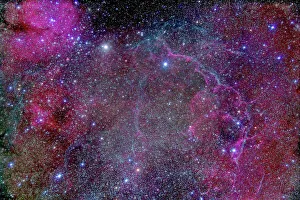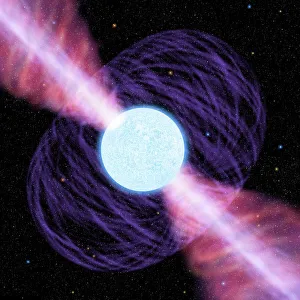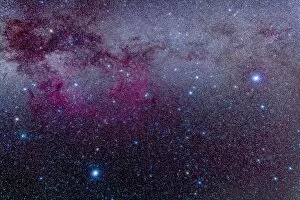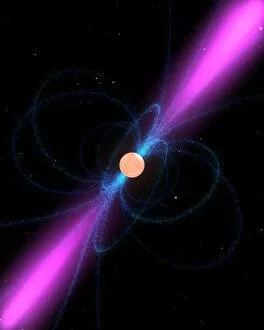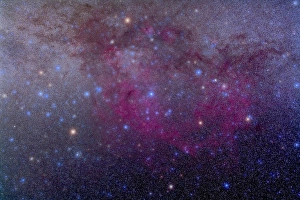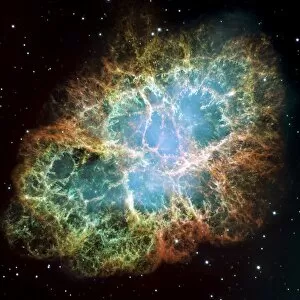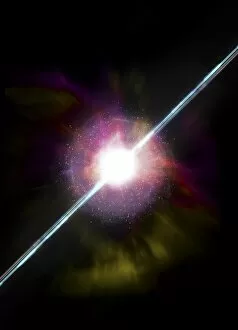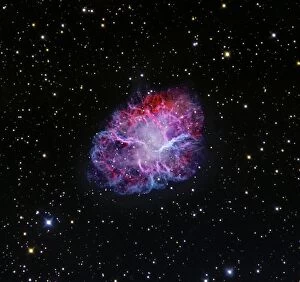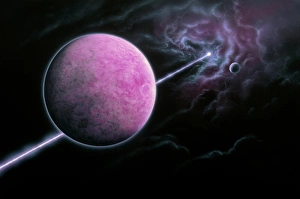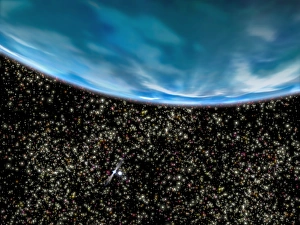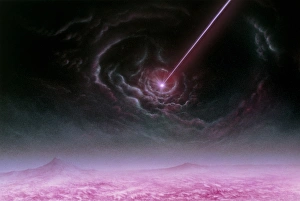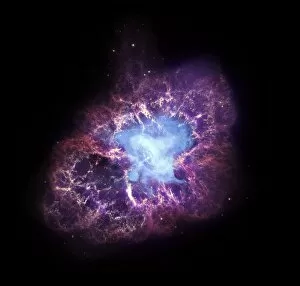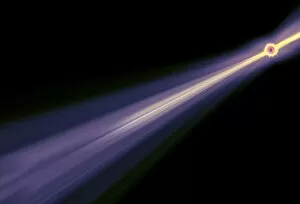Pulsar Collection
"Pulsar: Unveiling the Mysteries of the Cosmos" In this captivating composite image, we are transported to the mesmerizing realm of pulsars
All Professionally Made to Order for Quick Shipping
"Pulsar: Unveiling the Mysteries of the Cosmos" In this captivating composite image, we are transported to the mesmerizing realm of pulsars. The Crab Nebula, a celestial masterpiece born from a supernova explosion witnessed by ancient astronomers, takes center stage. Its ethereal glow dances amidst the vastness of space, leaving us in awe. As our gaze shifts towards the Gum Nebula area of Vela, we encounter another cosmic marvel - the Vela Supernova Remnant. This enigmatic region captivates with its intricate beauty and serves as a testament to the immense power unleashed during stellar explosions. But what exactly is a pulsar? In this stunning artwork depiction, we catch a glimpse into their mysterious nature, and are highly magnetized neutron stars that emit beams of electromagnetic radiation as they rotate rapidly. Their rhythmic pulses have fascinated scientists for decades and continue to unlock secrets about our universe's evolution. Delving deeper into these wonders, an artist's concept reveals an extraordinary sight - a pulsar planet system. Here, planets orbit around these intense celestial objects in perfect harmony. It sparks our imagination and raises questions about potential life beyond Earth. Yet amidst all this cosmic grandeur lies human ingenuity at work. Kosta Varnavas/ES33 and Dr. Herb Sims/ES63 diligently test the Pulsar – a programmable ultra-low-power system adaptable radio designed to explore distant realms with precision and efficiency. With each experiment conducted by these brilliant minds comes new knowledge about pulsars' behavior and their role in shaping galaxies throughout time. Their tireless efforts bring us closer to understanding these astronomical phenomena that have intrigued humanity since time immemorial. So let us embark on this journey through space and time as we unravel the secrets hidden within pulsars – those radiant beacons illuminating our universe's tapestry while reminding us of its infinite wonders.


